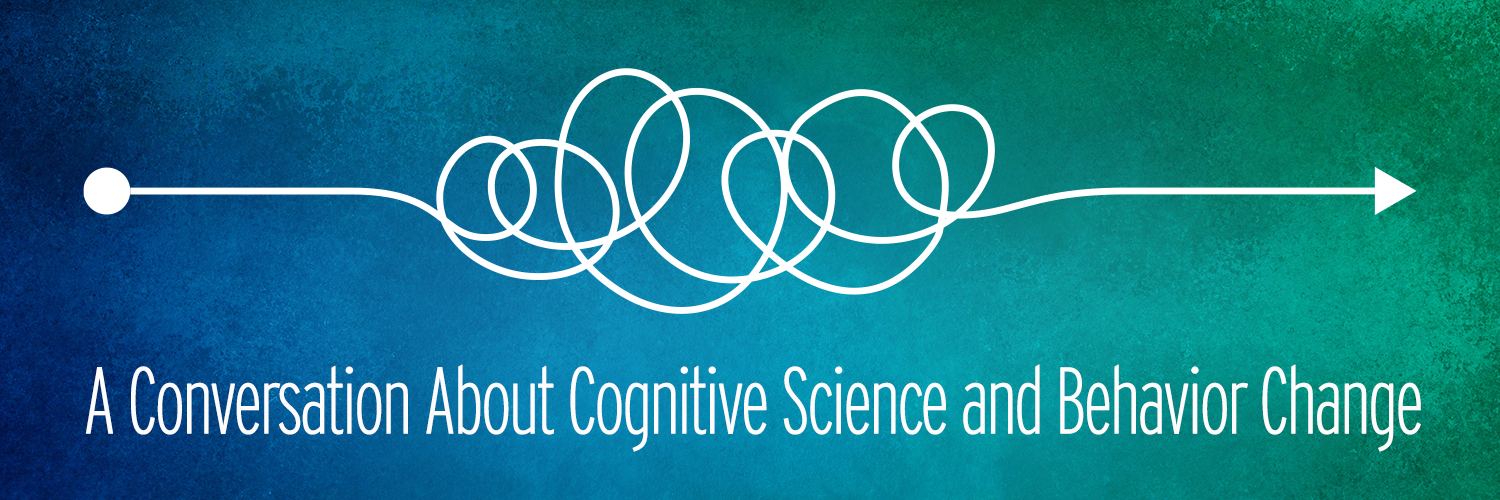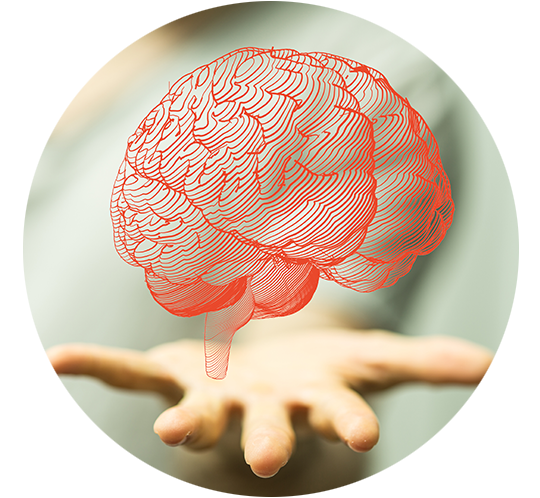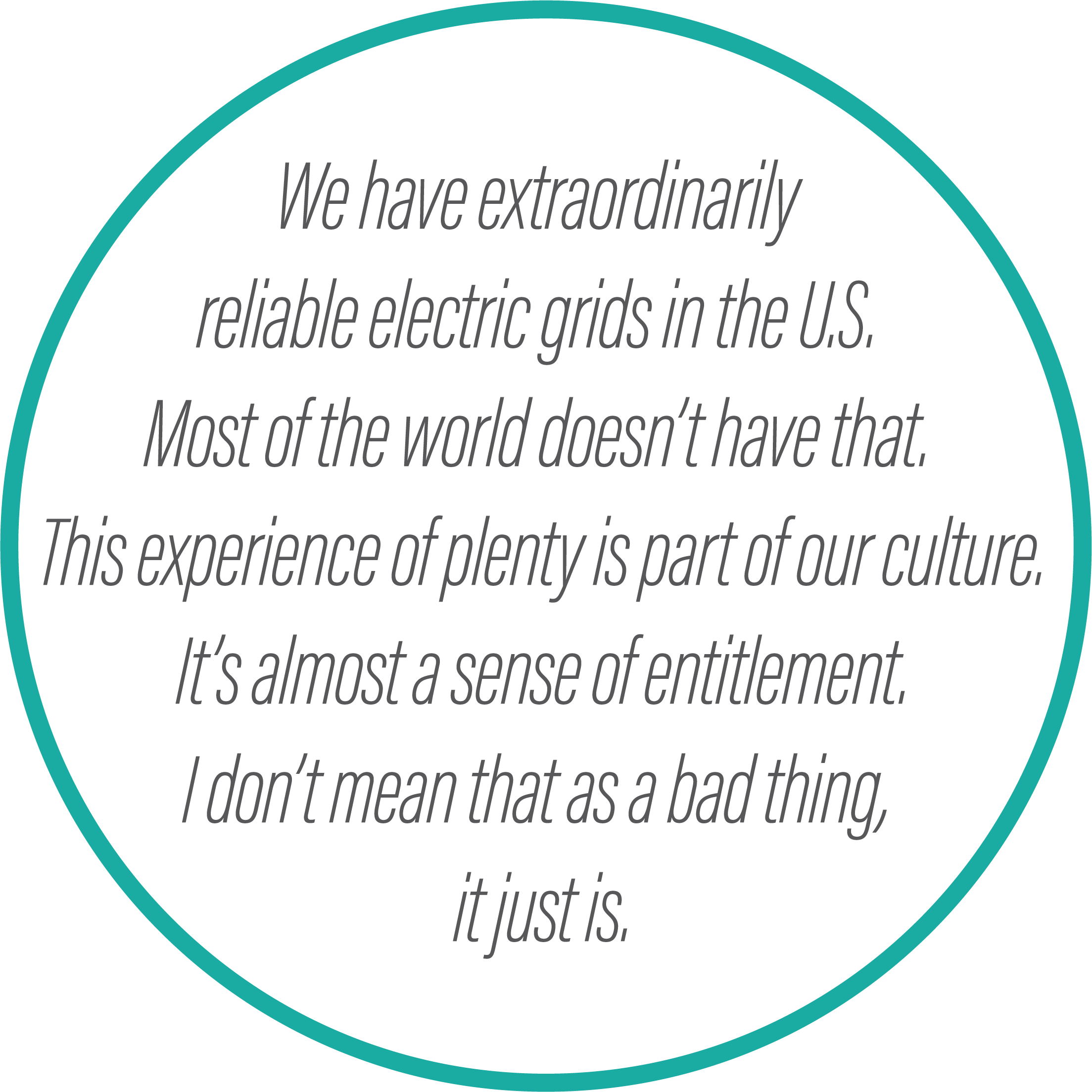
What motivates us to do what we do? Why can’t we change habits we want to change? Why can’t we remember to turn the lights off at home or resist the urge to crank up the heat on a cold day? Sometimes we can’t even answer these questions about our own personal habits, so how can we expect to understand the complex habits and behaviors of a large and diverse customer population?
Thankfully, ILLUME Director Dr. Alex Dunn has answers. Alex holds a Doctorate in Cognitive Psychology from the University of California, Santa Cruz, and has been leading large-scale applied research projects in the energy industry for over a decade. ILLUME Founder, Anne Dougherty, caught up with Dr. Alex Dunn to discuss cognitive science and linguistics and how these ways of understanding people are critical to changing behavior in the energy industry.
What a Cognitive Science Lens Means
Anne: Alex, what are the disciplines of cognitive science and linguistics? And more importantly, how do they relate to our energy work?
Alex: Cognitive science is all about understanding how people think but with an interdisciplinary lens. It’s what makes cognitive science so compelling – acknowledging that many disciplines have pieces of the cognition puzzle, so let’s integrate them into one study. These include integrating linguistics, neuroscience, computer science, anthropology, psychology, and philosophy to understand what makes us tick.
Linguistics is focused on trying to understand language, from how people speak and communicate to how they interact. Linguistics covers so much, including phonetics, the sounds you make; pragmatics, the conversations you have; to historical linguistics, how languages have developed and evolved.

In energy, cognitive science and linguistics pervade everything we do. These areas of work help us to understand how we think about energy, how we interact with it, and how we interact with each other. Electricity is an invisible resource, something we take for granted and only think of when things break down. That has profound consequences on how we use energy. So, from a linguistics lens, how do we market and talk to people about this invisible resource?
Cognitive science can help answer questions like, how do we get people to change their behaviors? What values can we use to make this invisible resource visible, so that consumers care about it? For example, when you think about washing your clothes in cold water, it’s not something that is visible, and therefore not something we pay attention to. It’s a dial you turn and leave where it is. Cognitive science would say you need to disrupt the behavior by making the person pay attention to it again, then find a way to create a new habit, so they can forget about it again but in a way that saves energy!
Linguistics and cognitive science together can help you figure out how to talk about washing with cold water. Like, how can you find out what words will capture someone’s attention and motivate them to make a change. Of course, these are tough things to change because there are other elements that are vital to think about as well, like the role of culture in our thinking.
The Culture of Plenty
Anne: That makes me think of some work I led years ago with first generation immigrants to the U.S. Our interviews illustrated how different people conceptualized electricity based on the culture of energy use in their countries of origin.
Alex: Yes, I’ve seen this firsthand, how my cousins in Argentina think about electricity versus my cousins in the U.S. do. We have had plentiful energy and resources for a long time, so the thought of changing our behavior to conserve almost feels like a burden. The motivation is a lot harder to create in our culture than in others.

This is something that can be shifted, especially when shocks happen that disrupt peoples status quo thinking – like the rolling brownouts in California in the 2000’s. I lived through those and boy did they make people pay attention to electricity for once! I was a linguist working in the Bay Area when those happened, and it was the first time I really thought about “the grid” and what reliability meant, and what I could do to change things. Those moments, the ones that disrupt people’s inattention and push you out of your typical habits, they can and should be used to shift behavior.
Cognitively speaking, there’s also memory to think about. Memory is such an interesting and well-studied area within cognitive science – people think that memory works like your computer’s hard drive, but we actually have a bunch of different “storage devices” in our minds, from a place where we store facts (semantic memory), a place where we store the things that have happened to us – like a funny story about your first date (episodic memory), to a place where we store processes (procedural memory). And that last type, procedural memory, is something that consistently makes our lives as environmentalists hard – once we learn how to do something, these processes become habits that you don’t think about, or you don’t pay attention to. Not only did the brownouts disrupt things and bring attention to them, but they also created visceral episodic memories for me.
In absence of those big disruptions, we need to lean on cognitive science to help us make little shifts, like what we need to do to shift a message to get people’s attention. Or how we shift a behavior into procedural memory – so it’s a habit. Or, how we frame the message to induce behavior change.
Framing
Anne: We talk about framing often when we advise our clients on how to communicate with their customers. Can you define framing for us?
Alex: Framing is creating a lens that nudges people to understand or think about their reality in a particular way. You can “frame” a concept using language. You can also do this visually. You can frame things in many ways. It’s an extraordinarily powerful approach to shifting thought. You can say something in two ways to make people think of a certain concept in two different ways.

One of the simplest examples of framing within our industry is saving money and saving energy. These are two very different frames, even though people tend to combine them. Talking about energy can motivate some people and talking about money can motivate others.
For example, we recently tested variations of these two main frames to see if we could get customers to sign up for a different rate. We first tested the canonical frames – this rate would save you x money on your bill, versus, this rate would help the state shift from fossil fuel generation to renewable generation. The environmental frame really worked for a small section of the population, but the money one resonated more with most – but weakly. So, how do we frame the money saving message to make it spur more interest in the rate? If you take the concept of saving money on your bill and really think about what motivates people there, there are a couple places you could go, but the one we tested was designed to activate a “bargain hunter” frame – like doing the extra thing to get the best deal. In our tests so far, it’s proving to be quite motivating, and a great example of taking a general frame and concentrate on the aspects of that frame that can motivate someone to act.
Loss Aversion, Motivation, and Trade-Offs
Anne: As you mentioned, you can frame communications many ways. Let’s stay with the money frame. Loss aversion is another common “frame.” Can you talk a bit about loss aversion?
Alex: Loss aversion stems from cognitive science and Daniel Kahneman and Amos Tversky’s work about the biases and heuristics (shortcuts) people use.1Heuristics (also called “mental shortcuts” or “rules of thumb”) are efficient mental processes that help humans solve problems and learn new concepts. These processes make problems less complex by ignoring some of the information that’s coming into the brain, either consciously or unconsciously. Today, heuristics have become an influential concept in the areas of judgment and decision-making. (Lim, Alane. “Heuristics: The Psychology of Mental Shortcuts.” ThoughtCo. November 9, 2018. Accessed February 16, 2022. https://www.thoughtco.com/heuristics-psychology-4171769#.) Loss aversion is a frame that shows that we tend to value things we own more than things we don’t. The pain of losing something is psychologically twice as strong as the pleasure of gaining something.2Kahneman, D., & Tversky, A. “Prospect Theory: An Analysis of Decision Making Under Risk.” Econometrica, Vol. 47, No. 2 (March 1979): 263-292. One of the original studies by Kahneman and Tversky showed that winning $100, while appealing, was about half as appealing as losing $100 was unappealing. In these studies, people made what were considered irrational decisions to keep the money they had to avoid losing it.
In the energy space, we have done a lot of testing on how to frame things using loss aversion. Loss aversion is a powerful, visceral tool. People started thinking we should talk about losing energy as opposed to saving energy. If we have a vision of land-of-plenty, and we talk about losing energy, some people respond with an emotional, visceral attachment. While this messaging may be powerful, it may create feelings of anger. So, you must be careful when choosing your messages.
Anne: We often think about behaviors in isolation, as if I decide about saving energy in isolation from all the other decisions I’m making. There’s a series of trade-offs we’re thinking about for every choice we make. At the end of a long day, a decision like what to eat for dinner might affect my ability to make other, more complex decisions.
Alex: Yes, it’s decision overload. When you think about it through a cognitive science lens, it’s really about the fact that we only have so much we can think deeply about, and if we have too many things asking for your attention, you end up getting to a place of decision fatigue. I feel like the pandemic really brought this to the forefront for me. When I’m at home and my young kiddo is at home, I’m having to make decisions not just about work but also about what my little guy can and can’t do. During these times, I realize that I’m making decisions contrary to my goals – so much screen time! It is the same with energy, if we make the mistake of bringing up ALL the decisions about energy we want people to make – like turn that thermostat down 2 degrees, and turn off all your lights, and unplug all your electronics when you’re not using them, oh and don’t forget to wash your laundry in cold water – you shut down, and you end up leaning on ALL your old habits and make zero changes.
Small Behavior Changes to Make Large-Scale Change
Anne: Can you talk a bit about something cool you’ve seen an organization or utility program do, where they figured out how to modify behavior in a clever way?
Alex: The California utilities are starting to default customers on a time of use. So, as changing behavior goes, defaulting customers would be the most effective intervention we can use based in cognitive science. We know this from so many experiments that people will follow the path laid out for them, so if you pre-program a thermostat for efficiency rather than comfort, or place people on a time of use rate when they move, then they’re more likely to stay on that rate or not change the thermostat settings.

From a cognitive perspective, this is a powerful intervention – you’re taking advantage of the “status quo” bias, where people want to keep with the status quo, instead of trying to combat it. So, defaults have the potential to cause large-scale behavior change, but they also take choice away, and if a customer is sensitive to a big shift, like a rate change, then you need to make sure it’s done carefully. The California utilities have been preparing for this rate change since 2016 – and it’s taken them until 2022 to fully roll it out because it’s a big deal. It will save help the state more effectively use renewable energy and keep their grid reliable, but it’s a big change for the customer and that requires preparation. So, it’s clever to use defaults, but make sure you do it responsibly.
On the other extreme, in in one research project we did, we observed people in their homes to understand at a granular level what makes them tick, what they specifically value, and what’s holding them back from changing their energy use habits. This group of people are highly motivated. They love their local areas and are proud of their environment. Hitting them with messages about the local environment motivated them. That type of research on a micro level helped our clients develop tailored, impactful messages.
When I was doing the California rate work, my parents were part of the pilot I was evaluating. We analyzed 30,000 surveys for that pilot, and I also called my mom for her reactions about that survey and the pilot, in general. She’d carefully read all the materials sent to her to change her behavior for a time of use rate, and she was confused about the idea of pre-cooling her house. She’s a product of parents who lived through the Depression. She grew up barely using AC—opening windows and using fans to cool the house at night, and certainly not pre-cooling. The thought of living in Sacramento in 104-degree heat and starting to cool your house when you don’t need it seems so alien to her. Trying to get people to change their behavior when they have so many habits – some of which are tied to deeply held values is hard.
Anne: Your mom’s story reminds me of the tension between efficiency and perceptions of “waste.” We have similar standoffs in our house around waste. We have a tankless water heater, and we have different preferences for the water temperature. I take scalding showers, and Eric likes tepid showers. It took us a year and a half to get into the rhythm of adjusting the temperature for our morning routines, to integrate this tiny turning of the dial into our lives.

Alex: I find that so telling – you certainly all had the motivation to make this small habit change because if you didn’t, you’d all be uncomfortable, and yet, habits are hard to change, so it took you time to get it figured out. Globally, finding that motivation for customers matters so much. And then, we need to really figure out the right intervention to disrupt and change the habit.
I wonder if your heating dial was in the shower with you, whether the habit would have changed faster because it’s another “temperature gauge” you need to change to take your shower.
The thing that gives me hope though, is that we do make these changes. While it isn’t easy, we do the research, we figure out how to disrupt the habit and reform it, and when we do, we can really make big changes. If everyone does something small like what you do to change the temperature on your water heater, or if half the people in the country do something small, that adds up to a lot of saved energy. It may seem insurmountable, but I think people can change with the right interventions, and cognitive science will help us get there.
